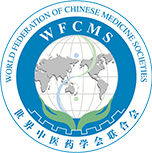Forsythosides as essential components of Forsythia-based traditional chinese medicines used to treat inflammatory diseases and COVID-19
Release time: Jun 17,2022
Reading volume: 969
[Abstract]
The dried fruits of the plant Forsythia suspensa (Forsythia Fructus: Lianqiao in Chinese) are used in many herbal preparations to treat various diseases or the associated symptoms. Forsythia extracts contain phenylethanoid glycosides (PhGs) such as the forsythosides (Fst A-to-P). The leading products, Fst-A,-B and-F (arenarioside), can be found also in >90 other plants inventoried here. The pharmacological properties of Fst are reviewed, with emphasis on their anticancer, antiviral, and antibacterial activities, which essentially derive from their anti-inflammatory and antioxidant effects. Fst-B functions as a potential binder of the repressor protein Kelch-like ECH-association protein 1 (Keap 1), thus promoting the nuclear translocation of the transcription factor Nuclear factor erythroid 2-related factor 2 (Nrf2) implicated in the subsequent activation of the production of antioxidant enzymes and repression of the oxidative stress. The regulation of the Nrf2/Heme oxygenase-1 pathway is the central piece of the multifaceted mechanism of action of Fst-A/B. Their prominent antioxidant and anti-inflammatory effects support the use of these compounds in different inflammation-related diseases and conditions, from sepsis to neuroprotection and many other pathologies discussed here. In addition, these properties contribute to the antiviral action of the compounds. Fst-A/B displays activities against the influenza A virus and different Fst-containing traditional Chinese medicinal (TCMs) have revealed beneficial effects to combat the current COVID-19 pandemic. The mechanisms whereby Fst-A/B could inhibit viral multiplication are discussed. PhGs likely contribute to the anti-COVID-19 activities reported with several TCM such as Shuang-Huang-Lian oral liquid, Lianhua-Qingwen capsules, and others. This review highlights the pharmacological profile of Fst and illustrates health benefits associated with the use of Forsythia Fructus.
The dried fruits of the plant Forsythia suspensa (Forsythia Fructus: Lianqiao in Chinese) are used in many herbal preparations to treat various diseases or the associated symptoms. Forsythia extracts contain phenylethanoid glycosides (PhGs) such as the forsythosides (Fst A-to-P). The leading products, Fst-A,-B and-F (arenarioside), can be found also in >90 other plants inventoried here. The pharmacological properties of Fst are reviewed, with emphasis on their anticancer, antiviral, and antibacterial activities, which essentially derive from their anti-inflammatory and antioxidant effects. Fst-B functions as a potential binder of the repressor protein Kelch-like ECH-association protein 1 (Keap 1), thus promoting the nuclear translocation of the transcription factor Nuclear factor erythroid 2-related factor 2 (Nrf2) implicated in the subsequent activation of the production of antioxidant enzymes and repression of the oxidative stress. The regulation of the Nrf2/Heme oxygenase-1 pathway is the central piece of the multifaceted mechanism of action of Fst-A/B. Their prominent antioxidant and anti-inflammatory effects support the use of these compounds in different inflammation-related diseases and conditions, from sepsis to neuroprotection and many other pathologies discussed here. In addition, these properties contribute to the antiviral action of the compounds. Fst-A/B displays activities against the influenza A virus and different Fst-containing traditional Chinese medicinal (TCMs) have revealed beneficial effects to combat the current COVID-19 pandemic. The mechanisms whereby Fst-A/B could inhibit viral multiplication are discussed. PhGs likely contribute to the anti-COVID-19 activities reported with several TCM such as Shuang-Huang-Lian oral liquid, Lianhua-Qingwen capsules, and others. This review highlights the pharmacological profile of Fst and illustrates health benefits associated with the use of Forsythia Fructus.

